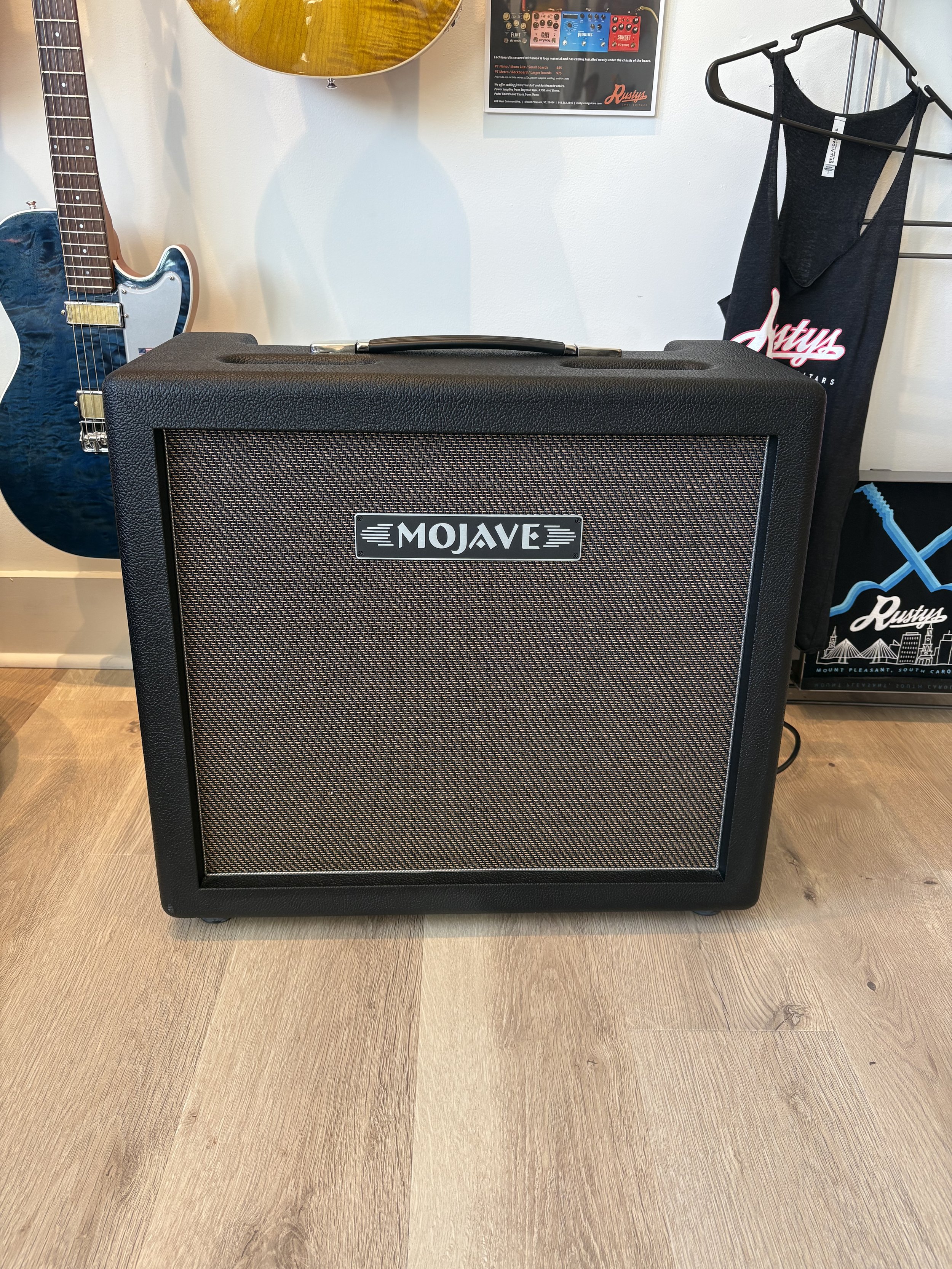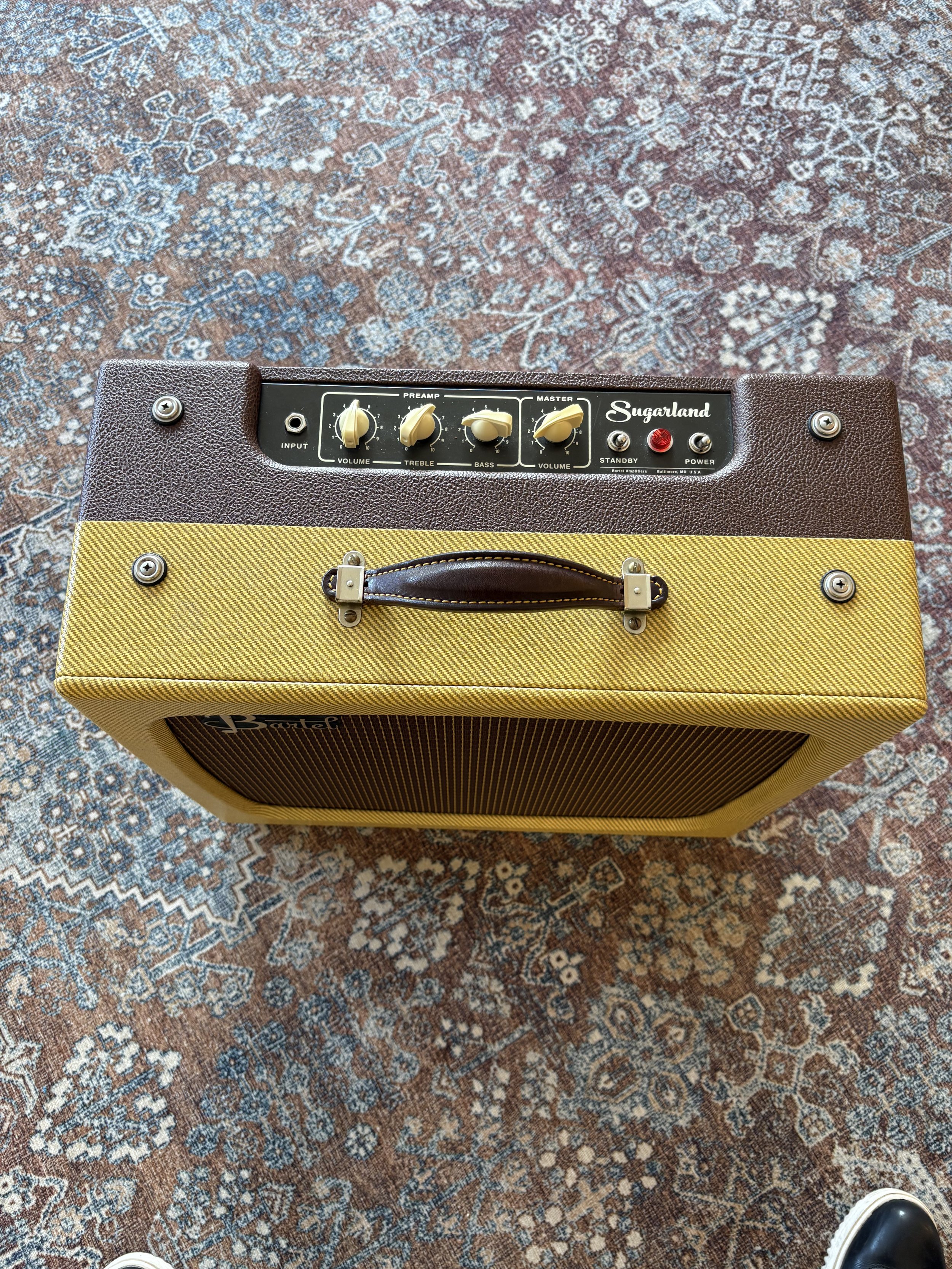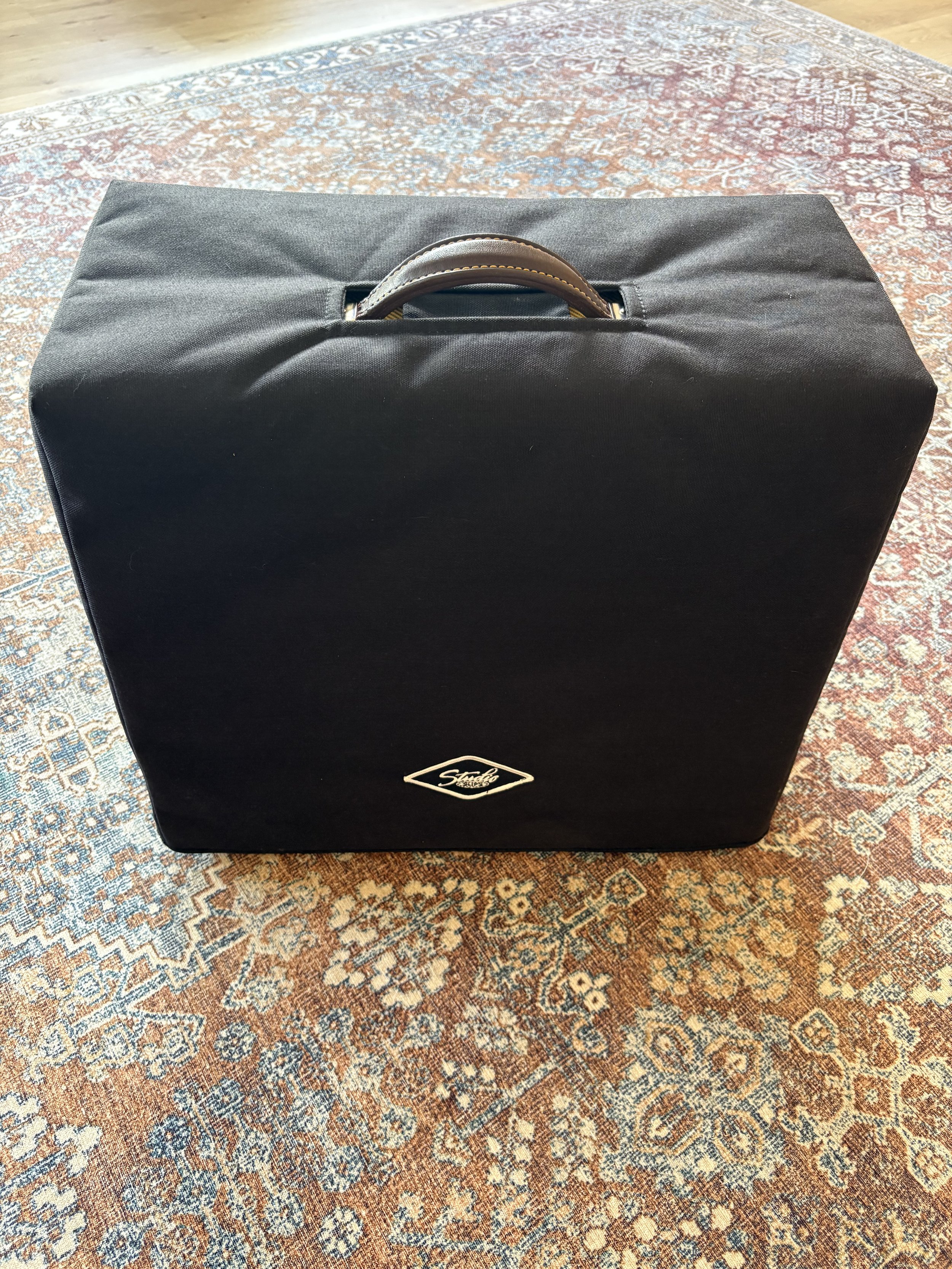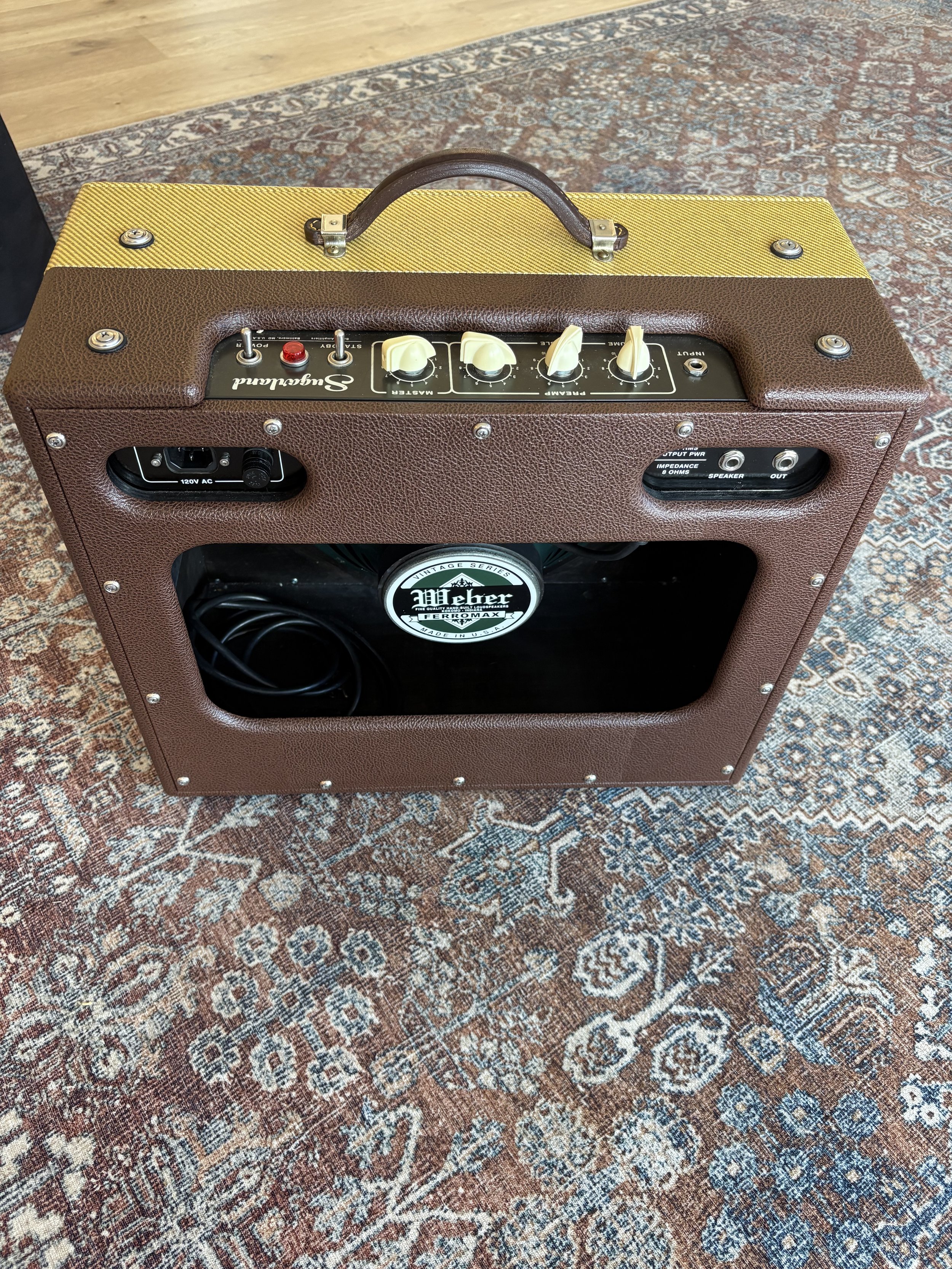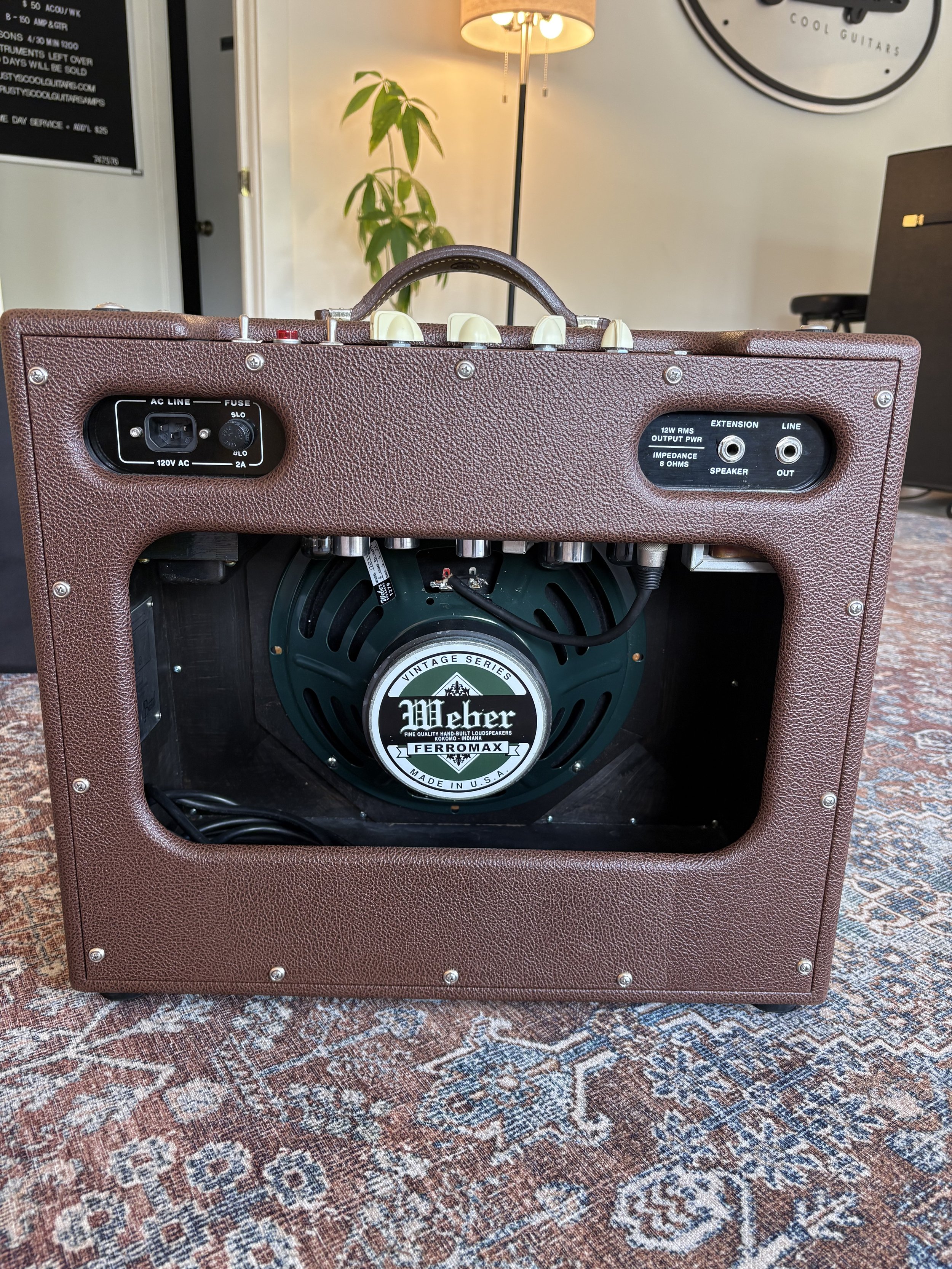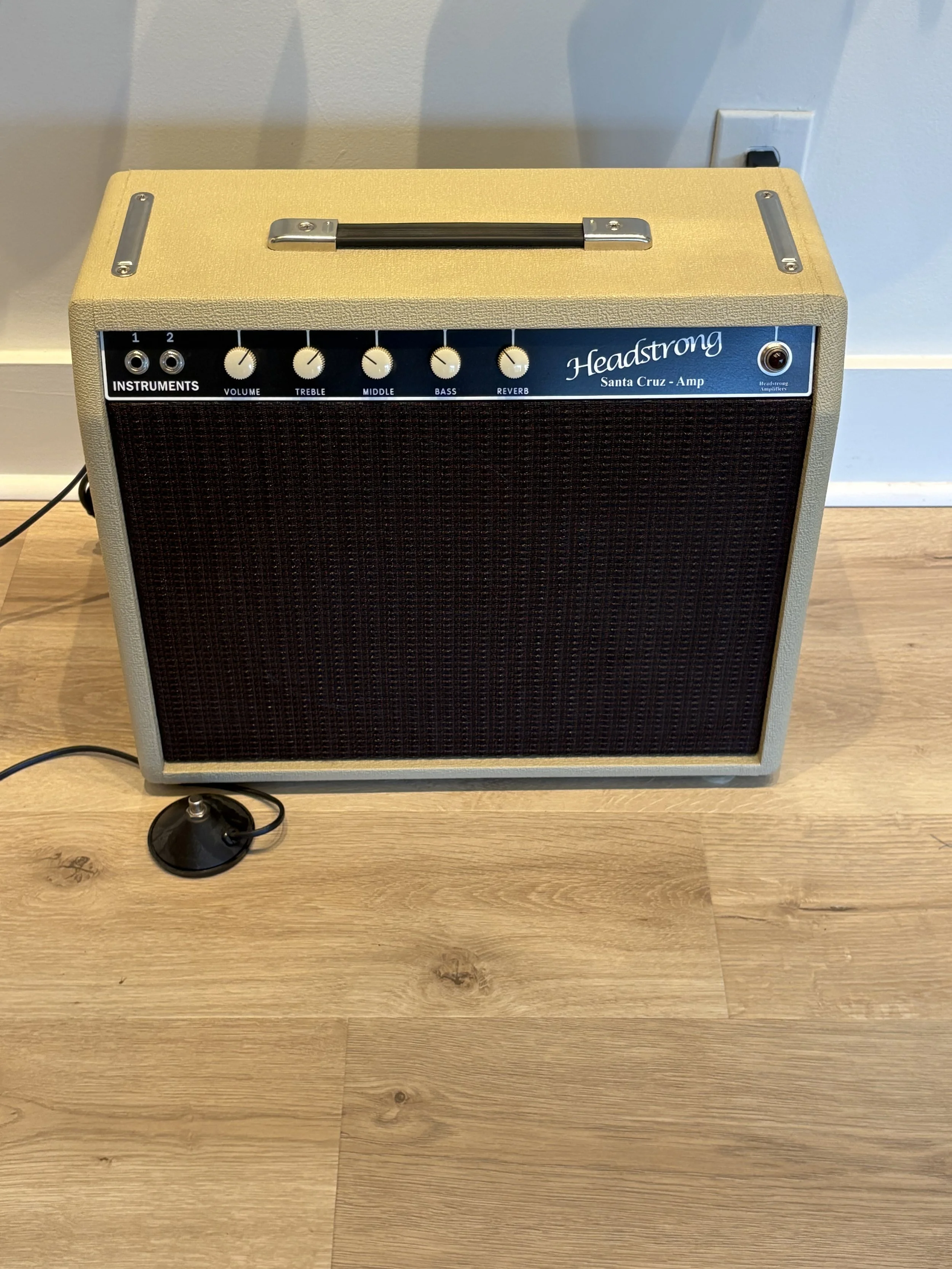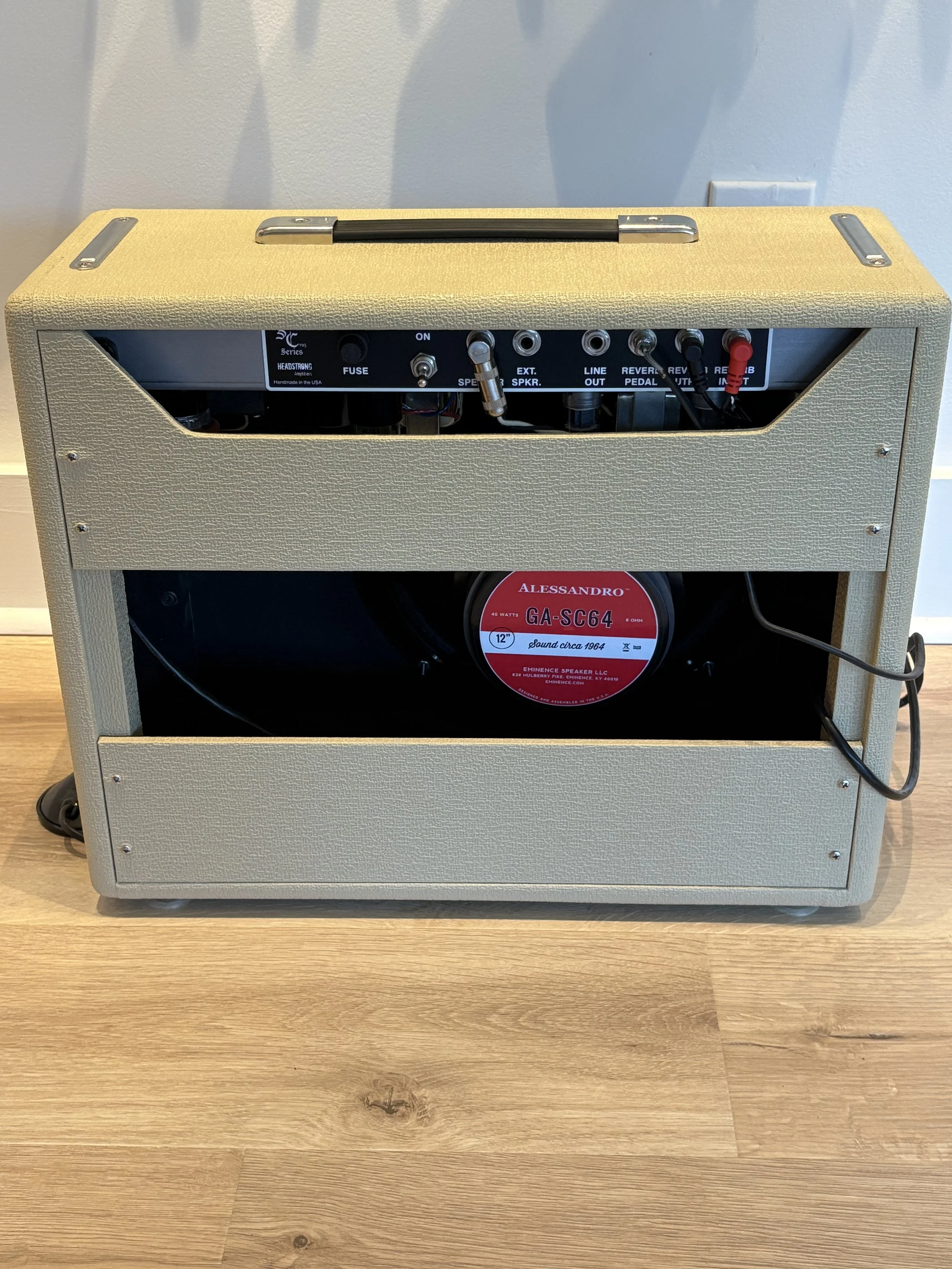 Image 1 of 3
Image 1 of 3

 Image 2 of 3
Image 2 of 3

 Image 3 of 3
Image 3 of 3




Goodsell Super 17 Black Tolex
Pre-owned Goodsell Super 17 combo amp
RG: The evolution of the Super 17 from it’s humble beginnings on recycled organ chassis to the current (and probably final) Mark IV iteration was a fairly linear path that reflected my maturation as a builder. I was about 40 units in to what would be retroactively be known as the “Mark I” before it occurred to me that amp building could be a viable career alternative to wrenching Hammond organs. It would be another 60 or 70 amps before the Mark 2 showed up, which was the solution to the erratic and inconsistent supply of organ parts. It was an off- the-shelf aluminum Marshall 18-watt kit chassis with all of the holes drilled in the right places, and I continued to build the ex- act same 3-knob Super 17 on this platform, which would soon find its way into the Marshall 18-watt style birch-ply combo cabinet that many other small builders have embraced over the years. This combo was the launch pad for most of the innovations that would define later models – it could be a 1x12 or a 2x10, the same chassis could be adapted to the 33-watt models, and it facilitated features like reverb and tremolo, which went through their own process of evolution.
Reverb and Gibson Bias-vary Tremolo
From the beginning, the secret sauce has been in the simplicity, including the single tone control, and I was loathe to add any feature that would detract from the purity of the original signal path. I found I was able to inject the reverb signal on the ground side of the phase inverter, and avoid the signal degradation from doing it the “normal” way, and while it sounds different, it’s effective with it’s own personality. Soon after came the late ‘50s Gibson-inspired bias-vary tremolo, which begs the question why anyone would ever use any other method. Like the reverb, it is not in the signal path, manipulating the bias voltage on the power tubes instead. These two features could be viewed as “modular” additions as either (or both) could be added to any push-pull amp with a long-tail phase inverter with virtually no alterations to the original circuit.
Pre-owned Goodsell Super 17 combo amp
RG: The evolution of the Super 17 from it’s humble beginnings on recycled organ chassis to the current (and probably final) Mark IV iteration was a fairly linear path that reflected my maturation as a builder. I was about 40 units in to what would be retroactively be known as the “Mark I” before it occurred to me that amp building could be a viable career alternative to wrenching Hammond organs. It would be another 60 or 70 amps before the Mark 2 showed up, which was the solution to the erratic and inconsistent supply of organ parts. It was an off- the-shelf aluminum Marshall 18-watt kit chassis with all of the holes drilled in the right places, and I continued to build the ex- act same 3-knob Super 17 on this platform, which would soon find its way into the Marshall 18-watt style birch-ply combo cabinet that many other small builders have embraced over the years. This combo was the launch pad for most of the innovations that would define later models – it could be a 1x12 or a 2x10, the same chassis could be adapted to the 33-watt models, and it facilitated features like reverb and tremolo, which went through their own process of evolution.
Reverb and Gibson Bias-vary Tremolo
From the beginning, the secret sauce has been in the simplicity, including the single tone control, and I was loathe to add any feature that would detract from the purity of the original signal path. I found I was able to inject the reverb signal on the ground side of the phase inverter, and avoid the signal degradation from doing it the “normal” way, and while it sounds different, it’s effective with it’s own personality. Soon after came the late ‘50s Gibson-inspired bias-vary tremolo, which begs the question why anyone would ever use any other method. Like the reverb, it is not in the signal path, manipulating the bias voltage on the power tubes instead. These two features could be viewed as “modular” additions as either (or both) could be added to any push-pull amp with a long-tail phase inverter with virtually no alterations to the original circuit.
Pre-owned Goodsell Super 17 combo amp
RG: The evolution of the Super 17 from it’s humble beginnings on recycled organ chassis to the current (and probably final) Mark IV iteration was a fairly linear path that reflected my maturation as a builder. I was about 40 units in to what would be retroactively be known as the “Mark I” before it occurred to me that amp building could be a viable career alternative to wrenching Hammond organs. It would be another 60 or 70 amps before the Mark 2 showed up, which was the solution to the erratic and inconsistent supply of organ parts. It was an off- the-shelf aluminum Marshall 18-watt kit chassis with all of the holes drilled in the right places, and I continued to build the ex- act same 3-knob Super 17 on this platform, which would soon find its way into the Marshall 18-watt style birch-ply combo cabinet that many other small builders have embraced over the years. This combo was the launch pad for most of the innovations that would define later models – it could be a 1x12 or a 2x10, the same chassis could be adapted to the 33-watt models, and it facilitated features like reverb and tremolo, which went through their own process of evolution.
Reverb and Gibson Bias-vary Tremolo
From the beginning, the secret sauce has been in the simplicity, including the single tone control, and I was loathe to add any feature that would detract from the purity of the original signal path. I found I was able to inject the reverb signal on the ground side of the phase inverter, and avoid the signal degradation from doing it the “normal” way, and while it sounds different, it’s effective with it’s own personality. Soon after came the late ‘50s Gibson-inspired bias-vary tremolo, which begs the question why anyone would ever use any other method. Like the reverb, it is not in the signal path, manipulating the bias voltage on the power tubes instead. These two features could be viewed as “modular” additions as either (or both) could be added to any push-pull amp with a long-tail phase inverter with virtually no alterations to the original circuit.





